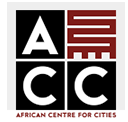Dschang, Cameroon report
available in French
AFSUN’s report on food security in the municipality of Dschang in Cameroon is available in French: Sécurité Alimentaire Dans Les Villes Secondaires en Afrique: N°. 3. Dschang, Cameroun.
Food Security in Africa’s Secondary Cities: No. 3. Dschang, Cameroon – by Alexander Legwegoh, Yanick Borel Kamga, Liam Riley, Lekeufack Martin and Patrick Njukeng – forms part of the African Food Security Urban Network’s goal to increase knowledge on urban food systems and household food insecurity in Africa’s cities and builds on studies of secondary cities in Malawi and Namibia.
These studies confirm that household food insecurity is widespread in smaller African cities and is linked to poverty, rising food prices, high unemployment, and limited opportunities to produce food. This report on Dschang contributes to an understanding of poverty in the city in terms of what people are eating, how they get their food, and the difficulties households face in accessing necessities such as water and electricity. AFSUN’s focus on food as an urban issue brings a new perspective to discussions on food security in Central Africa, particularly in Cameroon. While the region is rich in agriculture, food insecurity persists and solutions are usually sought through rural development and agricultural innovation. While this study focuses on Dschang, its findings and recommendations can be applied nationally as well as locally. The report aims to help Cameroon’s government to improve its food security policies, food system governance and urban planning.
In the second report in our new AFSUN series, we look at the northern Namibian towns of Oshakati, Ongwediva, and Ondangwa through the lens of household food security.
As well as forming part of a new body of research on secondary urbanization and food security in Africa, the report by Ndeyapo Nickanor, Lawrence Kazembe and Jonathan Crush makes systematic comparisons between the food security situation in the Oshakati-Ongwediva-Ondangwa corridor and the much larger capital city of Windhoek. A major characteristic of urbanization in Namibia is the perpetuation of rural-urban linkages through informal rural-to-urban food remittances. This survey found that 55% of households in the three towns receive food from relatives in rural areas. Urban households also farm in nearby rural areas and incorporate that agricultural produce into their diets.
The survey showed that over 90% of households in the three towns patronize supermarkets, which is a figure far higher than for any other food source. Overall, food security is better in Namibia’s northern towns than in Windhoek, where levels of food insecurity are particularly high. However, just because the food insecurity situation is less critical in the north, the majority of households in the urban corridor are not food secure. Like Windhoek, these towns also have considerable income and food security inequality, with households in the informal settlements at greatest risk of chronic food insecurity.
Mzuzu, Malawi, was the focus of our first report in the series. Key findings in this report – by Liam Riley, Emmanuel Chilanga, Lovemore Zuze and Amanda Joynt – include that the most vulnerable households are those without a formal wage income, households headed by older people, especially older women, and households that are not able to produce food in the rural areas.
The research also shows that the food system is dynamic and diverse, with households accessing food from a variety of formal and informal food sources and relying on rural-urban linkages for urban survival. Urban and rural agriculture are important features of the food system, but there is little evidence that these are the “self-help” responses to poverty that advocates for urban agriculture in Africa sometimes imply.
Category: AFSUN News





